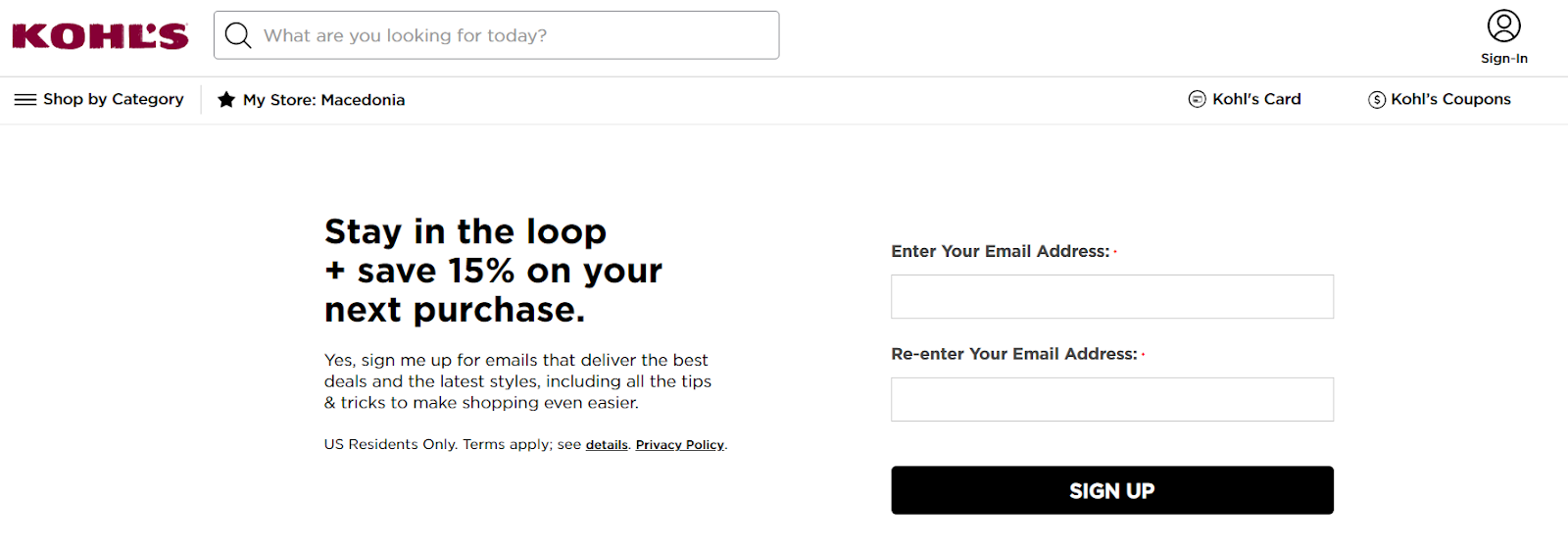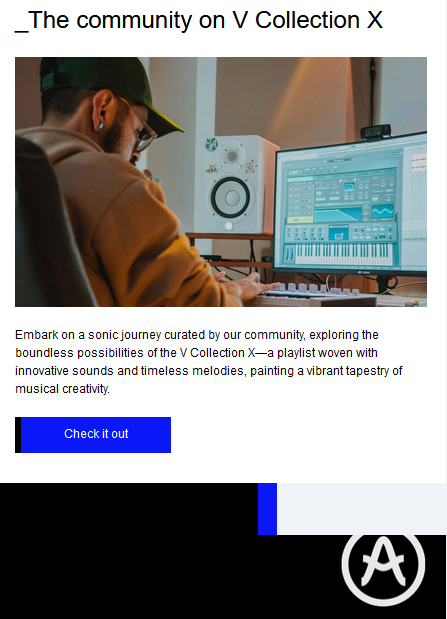
Email marketers often want to reach as many contacts as possible. That’s why many use a bulk email sender to broadcast their messages. A bulk — or “blast” — email is a mass message you send to many recipients at the same time. For example, you could send a bulk email to announce an upcoming event. You might also send a bulk email to get your monthly newsletter out.
Bulk email can sometimes be a valuable tool, but this method raises ethical and legal concerns. Customers may feel confused or annoyed if they receive unwanted bulk emails. Note that some governments have created laws to restrict how many bulk emails you can send and what you can include.
Many marketers use email automation as a legal alternative to bulk email. This method allows brands to send personalized emails at specific times. However, some companies continue to use bulk emailing to share newsletters and other content.
This guide explores the benefits of this approach and how to write effective bulk emails. We also cover bulk emailing etiquette and the best bulk email senders.
Understanding bulk email
A bulk email service lets users send mass emails to their mailing lists. With this software, you can write a single email and send it to multiple contacts with the click of a button. You can use bulk email technology to reach hundreds or thousands of subscribers at once.
Typically, marketers use bulk email senders to reach broad audiences. Here are a few examples of appropriate blast emails:
- A coupon for 10% off your products
- A general survey for all your customers
- An announcement that your company has won a major award
- A monthly newsletter
- A policy update that applies to every subscriber

When you use it in the right situations, bulk email has several advantages. It saves time by allowing you to simultaneously reach your entire mailing list. Bulk email can also be an affordable way to promote your brand. Email marketing has an average return on investment of $36 for every $1 spent, so an effective mass email can lead to big payoffs.
Experts use advanced bulk email techniques to improve performance. Many marketers embed interactive content in mass emails, such as quizzes and surveys. These elements can make bulk emails more engaging. Marketers also use A/B testing to send several versions of the same email to different clients. They compare how users interact with these messages to identify the best content.
But bulk email isn’t usually the best choice for messages that won’t interest all your contacts. Say you want to promote one of your products that’s specifically designed for young female customers. You can use other methods to send a targeted email to these contacts alone. For instance, email list segmentation lets you group your contacts by age, location, and other criteria.
Email etiquette in bulk mailing
As email becomes more popular and technology progresses, following email etiquette is important to making your messages engaging and effective. In the past, people had more tolerance for poorly formatted or spammy messages. Companies also sent emails less often, so promotional messages were more of a novelty.
But things have changed. In 2023, Americans sent an average of 9.8 billion emails per day. Many email users receive dozens or hundreds of messages daily. As a result, people tend to have higher standards for the emails they decide to read. They may mark unprofessional emails as spam or block the sender.
Here are a few basic dos and don’ts to follow before starting on your next bulk emailing project.
Do:
- Obey all relevant privacy laws
- Use a sign-up form to get permission before adding contacts to your mailing list
- Write catchy subject lines
- Make sure your messages are suitable for most of your contacts
- BCC contacts to avoid sharing their email addresses
- Format emails so contacts can view them with different devices and browsers
- Test your bulk emails before sending them
Don’t:
- Spam your contacts with too many emails
- Send mass emails that don’t provide value for your entire mailing list
- Buy lists of contacts
- Send emails with grammar and spelling errors
- Be cheesy or inauthentic
- Use pushy or overly sales-ey language, such as “BUY NOW”
- Write wordy or complex messages
Every industry has different email etiquette norms. So, look at what your competitors are doing and adapt your communication style to your audience. For example, if you sell to corporate executives, they likely expect formal language and goal-oriented calls-to-action (CTAs). By contrast, marketing professionals may welcome more creative and informal emails.
Tips for writing efficient bulk emails
Writing emails that appeal to broad audiences is no easy feat. Every part of your bulk emails should look polished and professional. The following elements are the building blocks of successful mass emails.
A compelling subject line
Start by writing an engaging five to seven-word subject line. The best headings make readers feel curious or excited. They also don’t use excessive punctuation or spammy language.
Let’s say you’re sending a bulk email to advertise a summer clothing sale. “Unlock the secret to summer style” is a strong subject line. By contrast, “FREE T-SHIRTS!!! CLICK NOW TO SAVE” will likely send your email straight to your audience’s spam folders.
An appropriate salutation
The salutation is the greeting that appears at the top of the body of your email. This line sets the tone for the rest of the message. “Dear valued customers” sounds formal but impersonal. Meanwhile, “Hey, shoppers!” is friendly but could be too casual for some audiences. Consider your brand voice and buyer personas to strike the right tone.
The best bulk email sender software lets you personalize salutations by inserting the contact’s name into the message. This personalization makes bulk messages feel more tailored to the recipient.
Body of the email
Most of your content goes in the body of the email. Organize the body of your message into sections with headings to make it easier for readers to skim. You can also add images, videos, and other visual content to grab your audience’s attention.
Focus on creating concise but meaningful content. Your email should help customers solve a problem or discover a new opportunity. For instance, if you sell candles, you could create a newsletter with tips for choosing the right scent for different types of spaces. Other examples of valuable content include exclusive deals, upcoming events, and product spotlights.
Ask yourself, “Does this message provide value to everyone on my mailing list?” If the answer is no, consider using email segmentation to create a more targeted message.
Sign off
Create a strong sign-off that leaves readers with the right impression. Many marketers place CTAs at the end of their emails. These statements encourage your audience to engage with your brand further.

Bulk emails should include broad CTAs that appeal to many users, using language such as:
- Learn more
- Refer a friend and save 50% on your next order
- Shop new styles
Error-free copy
Let’s face it: Bulk emails with grammatical and spelling errors look like spam. That’s why it’s essential to proofread your messages carefully before you hit Send.
Tools like Grammarly and Hemingway Editor flag common mistakes and readability considerations. Still, you’ll need to double-check their suggestions to ensure they’re correct. It’s also wise to read your emails out loud to check the tone and detect errors. And don’t underestimate the value of a grammar-savvy colleague or friend — a second pair of eyes can often pick up on mistakes you missed.
Common challenges and solutions
Things can go sideways anytime you communicate with hundreds or thousands of people. That’s why marketers often run into obstacles while using bulk email sender services. Below are three common challenges and strategies to overcome them.
Recipients get angry or upset by bulk emails
Most people respond to bulk emails with interest or indifference. However, some recipients may get upset when your message appears in their inbox. They might have forgotten they signed up for your mailing list or believe you sent too many emails. Or they may feel like your emails don’t apply to them.
Prevent this issue by only sending emails to people who have opted in to your mailing list via a sign-up form or button. That way, only interested people end up on your mailing list. Every bulk email should also include an unsubscribe button or link so your contacts can opt out of future communications if they wish.
Finally, send sincere apologies to people who complain about your bulk emails. If they have valid complaints, use their feedback to improve future messages.
Bulk emails cause misunderstandings
Bulk email lacks personalization. As a result, your subscribers may misinterpret your messages. For example, when sending general messages, vague language and lack of context can confuse your audience, or they may not think the message applies to them.
Avoid misunderstandings by writing clear and concise emails. Don’t use abbreviations, jargon, or ambiguous language. You should also provide context for attachments, hyperlinks, updates, and other content. Additionally, you can use font formatting and headings to emphasize critical information.
Readers send tardy replies
Some people don’t open their emails for days or weeks after you’ve sent them. As a result, you may receive tardy replies, or a subscriber may miss an offer or event. You can address this issue by including clear deadlines for time-sensitive actions. Setting aside time daily to respond to emails can also help you stay on top of messages.
Best bulk email sender software
There are many bulk email sender platforms available. Here’s a quick overview of three popular providers.
Constant Contact
Catering to small businesses who want a comprehensive marketing solution, Constant Contact is one of the best bulk email sender options available. This platform offers hundreds of email templates to create accessible and stylish messages. It also has an AI-powered content generator to help you find the right words for all your emails.
Constant Contact’s automation tools make sending bulk emails simple and easy. Schedule your messages to go out at peak times and personalize emails with dynamic content blocks. You can also set up automatic triggers so clients receive emails for predetermined actions.
Mailchimp
Mailchimp is another popular bulk email sender. Like Constant Contact, this software has hundreds of customizable email templates.
If you’re looking for a free bulk email sender, Mailchimp’s free plan lets you send 1,000 emails per more. Paid plans range from $13 to $350 monthly and have varying features. However, only some plans include dynamic content and send time optimization. You’ll also need to pay for a more expensive plan to use generative AI features.
Brevo
Brevo is an affordable bulk email sender with limited features. The platform has approximately 40 email templates, automation workflows, and personalization options. It also offers an AI subject line generator.
The free plan allows users to send 300 emails daily. Paid plans start at $25 monthly.
Extra considerations for bulk emailing
Addressing broad audiences can be tricky. Remember that people with diverse backgrounds and viewpoints will read your bulk emails. Aim to make your message inclusive and inoffensive.
These strategies can help you create appropriate and effective bulk emails:
- Add trigger warnings for potentially controversial content — and consider if bulk email is the best way to communicate your information
- Humor can engage readers, but avoid jokes that may come across as insensitive
- Choose a bulk email sender that uses cybersecurity measures to protect client data
- Readers spend an average of 10 seconds reading a brand email, so make your content easy to skim
Frequently asked questions about bulk emailing
Can I send bulk emails for free?
Some bulk email senders offer free plans with a limited number of email sends. You may prefer a paid plan if you have an extensive mailing list or want to use advanced features.
How many bulk emails can I send at a time?
Check with your bulk email sender to determine how many emails you can send. For instance, Constant Contact allows users to send 10, 12, or 24 times your number of contacts per month, depending on your plan. For instance, if you have the Standard plan with 0-500 contacts, you can send 500 x 12, or 6,000, emails per month.
Extend your influence with bulk emailing
Bulk email lets you share your brand and content with large audiences. However, following proper etiquette helps you avoid readers and email providers viewing your messages as spam. Focus on creating quality emails that provide value and showcase your brand voice. That way, readers will look forward to seeing your emails in their inboxes. Check out Constant Contact’s blog to learn more about the art of email marketing. You should also read the Federal Trade Commission’s guide to the CAN-SPAM Act to ensure your bulk emails meet legal requirements.




